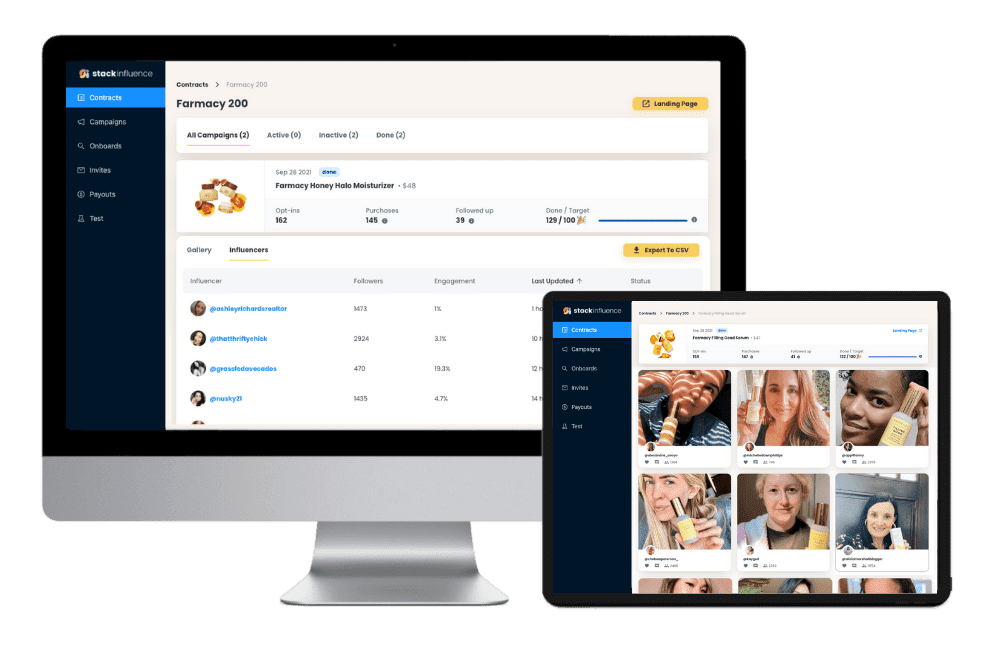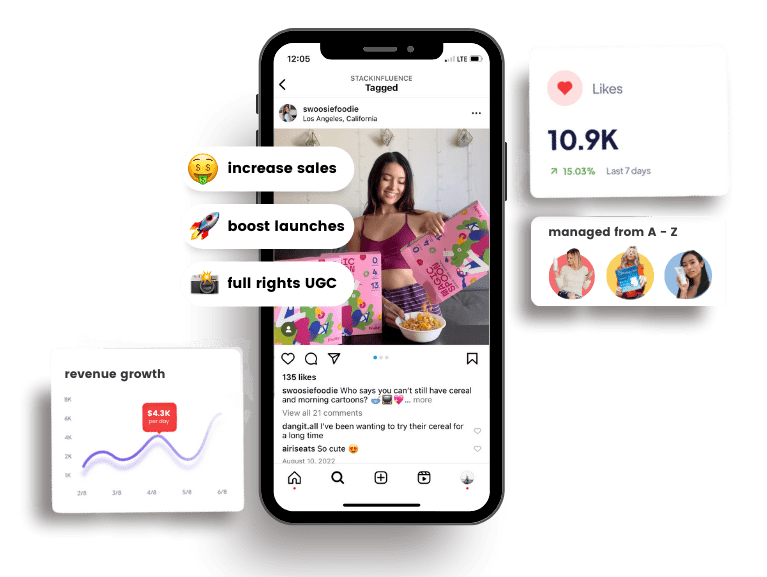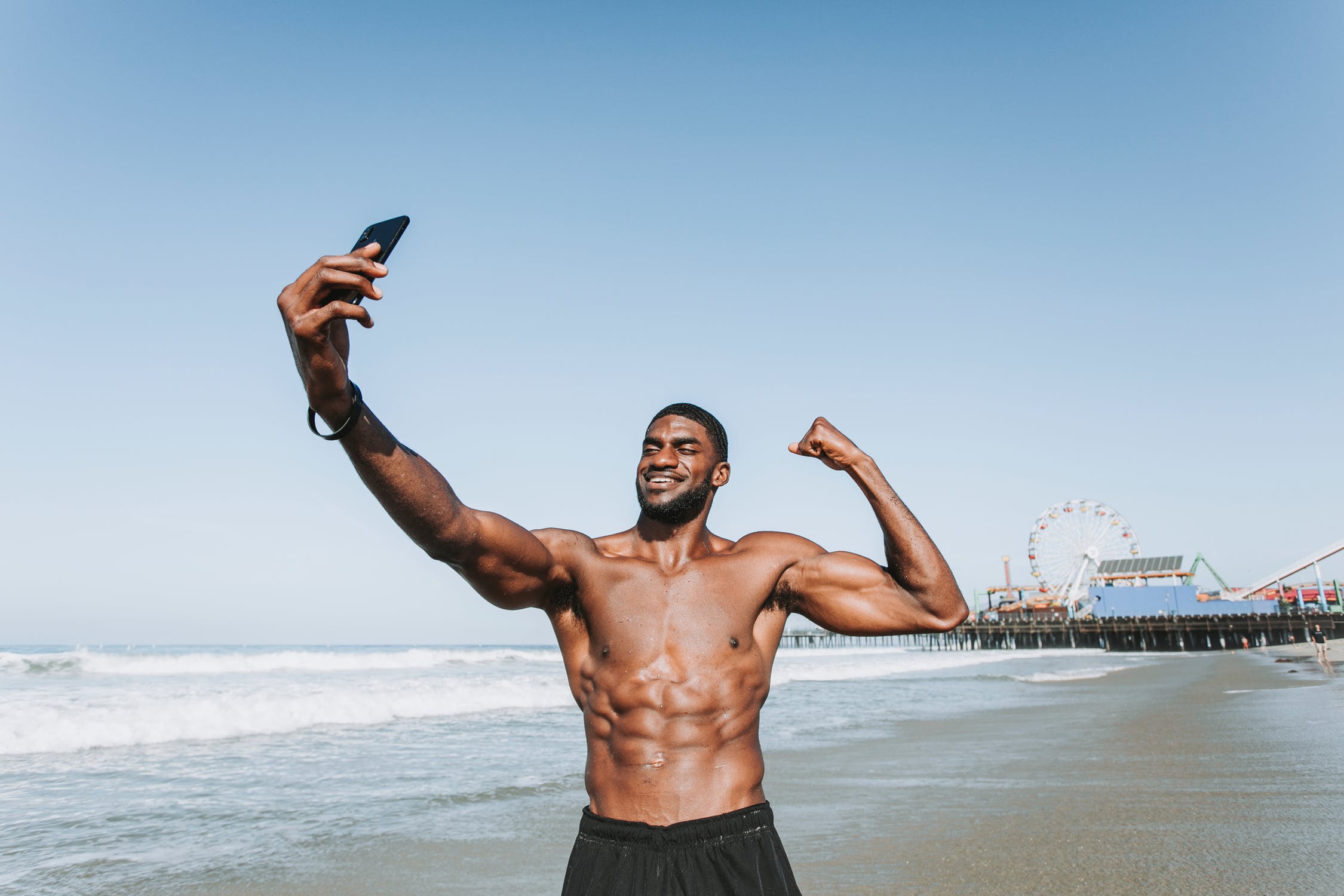The Amazon Influencer Program gets a Facelift
21st
January, 2019
Amazon Influencers
Influencer Marketing
Amazon Marketplace
This past week Business Insider released some leaked documents showing that Amazon is expanding their influencer marketing program which has been on the back burner for the past two years since launching in 2017.
Amazon has been on the forefront of many technological trends over the past few decades and they haven’t fallen short on influencer marketing. After the success of their affiliate marketing program, giving individuals commissions for bringing the online marketplace sales, they decided to create a similar program catered to influencers in order to take advantage of the many marketing benefits social media users have to offer.

Amazon’s Influencer Program has stepped up it’s game
Screenshot of Amazon’s Influencer Program Page
What’s the Amazon Influencer Program?
The Amazon Influencer Program gives influencers on social media platforms (like Instagram or Youtube) their own custom page on the Amazon marketplace. On this page, influencers can add any number of products that they would like to promote to their audience, creating a custom “online store” with their own special ‘vanity URL’ (i.e. amazon.com/shop/influencer-name). When someone purchases a product from their custom store page, the influencer will receive a commission of the profits.
“Amazon has been on the forefront of many technological trends over the past few decades and they haven’t fallen short on Influencer marketing.”
This feature is similar to Amazon’s Associate Program where individuals can get a commission from promoting products with a special ‘affiliate link’ but this new program provides Influencers more power or “influence” by giving them a branded presence on Amazon with a custom page to promote as many products as they wish.
Giving influencers their own page on Amazon allows them to easily direct their followers to a single location to make money with the online giant as opposed to directing followers to individual product links with ‘affiliate tags’ as was the strategy in the past.



Photograph sources via Pexels
Influencer inclusivity
The major change Amazon has made to their influencer program is to allow Micro-Influencers to join. If you don’t already know what Micro-Influencers are or what different types of influencers exist, you can learn more about them in our blog article Why Micro-Influencers are the Best Influencers. Since the program’s inception, only influencers who had large following bases either on Instagram, Twitter, Facebook or Youtube were allowed to join the Amazon influencer program. According to Business Insider’s research, this has finally changed.

The Amazon Influencer Marketing Program now accepts all forms of Influencers
Photograph of Influencers via Pexels
Amazon started soliciting and accepting numerous Micro-Influencers who have been coming out on Twitter and other social media platforms announcing their recent invitations and involvement in the program. Apparently “thousands have been signing up”. This has shifted the tides of their old strategy which involved only accepting big time social media personalities such as Mark Cuban and Gillian Michaels.
“The major change Amazon has made to their Influencer Program is to allow Micro-Influencers to join.”

Unlock the Power of Micro Influencers and Elevate your Brand Today!

With our Amazon influencer promotions we’ve increased brands #1-3 page keyword ranking as high as 5X. We’ve also 3X monthly recurring revenue, and gotten brands an Amazon Choice badge in as little as 2 months.
Getting a cut
Another major update Amazon has implemented this past year is a revamp of their product commission structure from a stepped commission (increased profits for higher sales) to a flat rate commission (no increase in percentage based on sales). Amazon has decided to give different percentages of profits to influencers who promote various product niches on the marketplace. Influencers and Amazon Associates alike will be have the same structure until further notice.
The highest paid commissions are being paid to fashion influencers who have the opportunity to make 10% of every sale they are apart of. I assume Amazon is catering their highest commissions to the fashion industry to bolster their own fashion line which was released in 2017. The second highest commission is going to influencers who promote furniture products which is followed close behind by the non-apparel category that includes Amazon’s own products Echo and Fire. It makes sense Amazon wants to reward influencers for soliciting sales on their higher priced goods and products that they produce in-house.
Another way Amazon allows Influencers to make money is by giving them flat fee monetary rewards called “bounties”. Bounties are earned by Influencers bringing in sales through embedded buttons on their Influencer pages or banner ads specifically targeted at their own online services like Prime, Audible and Amazon Fresh. According to the insights that Business Insider recently disclosed, Influencers will be able to make up to $15 US and as low as $3 US for every service sign-up they bring in.


Photograph sources via Pexels
Combating fakes and frauds
The Amazon influencer program has found a unique way to bypass the issue of accepting influencers who have fake followers. This issue has become a major problem in the influencer marketing industry over the past few years with the advent of mass fake social profiles and automation-bots who can create a false perception that a social media profile has extreme popularity when in reality they are small fish. Many influencers will purchase fake followers in order to increase their fee for sponsored posts and will even buy fake likes on their posts to create a facade of high engagement. The rise of fake follower accounts has resulted in brands getting conned out of millions of dollars.
The New York Times did an extended story on the fake follower industry called The Follower Factory, as well as Time magazine who wrote about Twitters purge of fake accounts which resulted in high profile individuals like Justin Bieber, Katy Perry and even Obama losing millions of followers. Amazon has been able to avoid this major issue in the social media influencer industry by only rewarding influencers for purchases they bring in, not for their following reach or post engagement.

Influencer marketing has been growing at an exponential rate for the past five years
Photograph of Influencers via Pexels

By William Gasner
CMO at Stack Influence
Growing with the influence
It’s not surprising that Amazon has finally step their game up with their Influencer Program since Influencer promotion is becoming one of the best online marketing tactics for eCommerce sellers and is growing at an annual rate of 38% with an estimated ad spend poised to reach between $5 billion and $10 billion in 2022. It’s also not too shocking that they now have included social media users with tight-knit followings into their program since Micro-Influencers have become the leading influencer type for marketing campaigns in 2018, and Amazon’s previous attempt at soliciting big name Influencers wasn’t very successful (as Forbes pointed out in their article “One Year Later, Amazon’s Influencer Program Has Not Changed The World”).
Amazon’s online marketplace competitor Walmart has also recently entered the Influencer space by integrating brands’ Influencer posts into their product listings in an attempt to “out-innovate” the leading online marketplace giant. Starting last June, Influencer pictures of food recipes, product recommendations, and blog articles began appearing below some products’ specifications. With Amazon’s strong hold and huge market share of 48% in the online retail market, Walmart is going to really have to really step up their game in order to increase their meager 3.7% online retail market share and try to take on the digital retail goliath.
It’s a bright future for Influencer marketing as a whole, as well as for Amazon sellers as we enter into 2019. It will be interesting to see what other changes both Amazon and Walmart make this year to take advantage of the power social media influencers have on consumer sales.
Want new articles before they get published?
Subscribe to our Awesome Newsletter.
Want new articles before they get published? Subscribe to our Awesome Newsletter.
stack up your influence
turning creativity into currency
our headquarters
111 NE 1st St, Miami, FL 33132
our contact info
[email protected]
stack up your influence
turning creativity into currency
our headquarters
111 NE 1st St, 8th Floor
Miami, FL 33132




